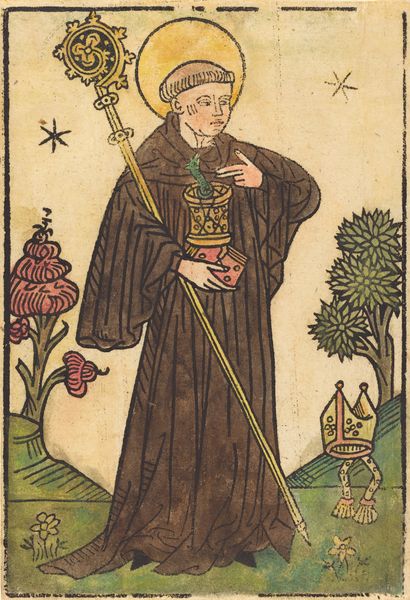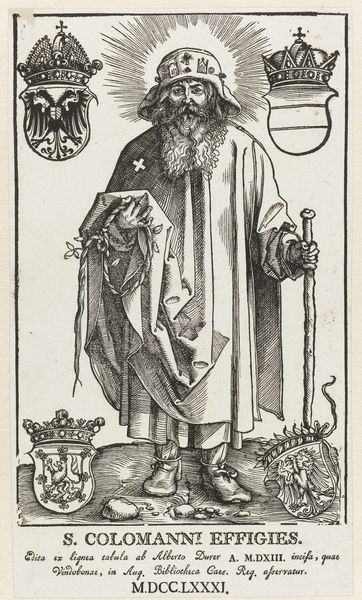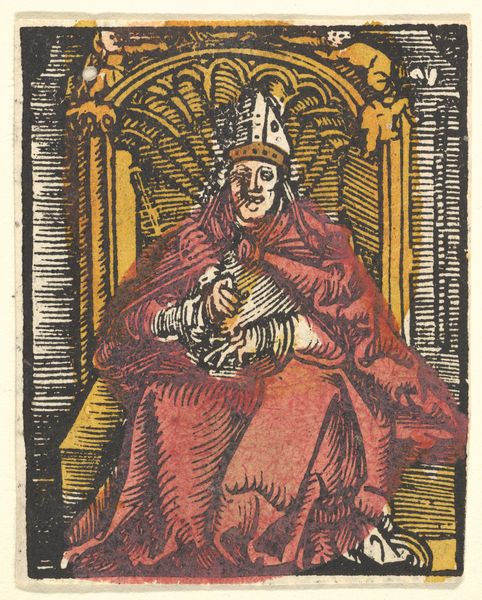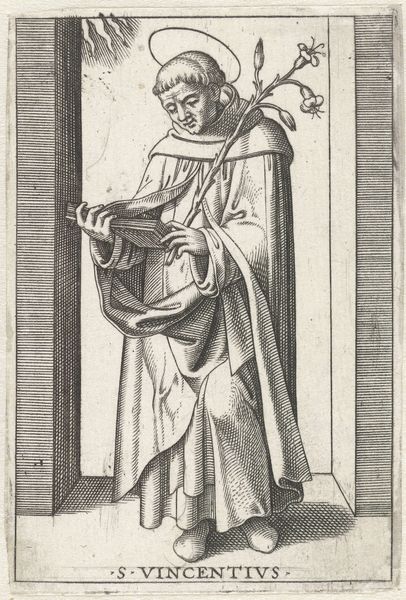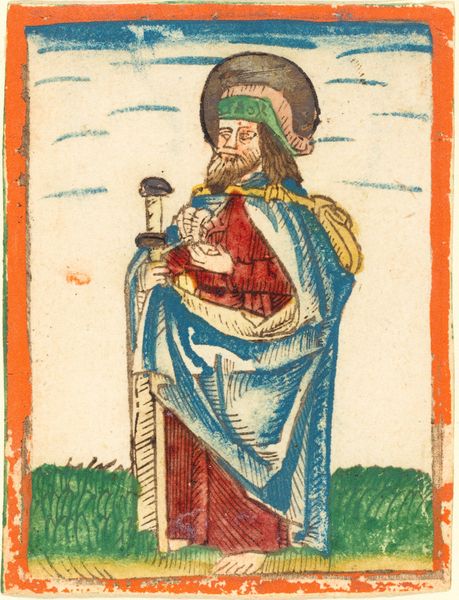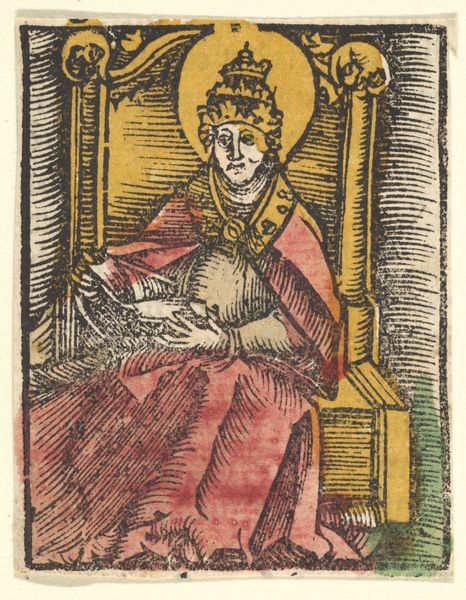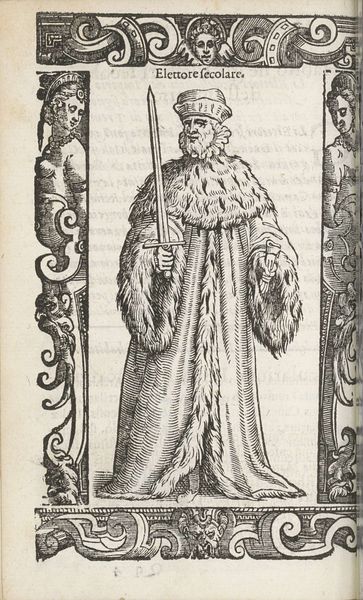
#
quirky illustration
#
childish illustration
#
cartoon like
#
cartoon based
# print
#
personal sketchbook
#
illustrative and welcoming imagery
#
cartoon style
#
cartoon carciture
#
cartoon theme
#
doodle art
Copyright: National Gallery of Art: CC0 1.0
This woodcut print portrays Friedrich Count of Schaumberg as the Bishop of Salzburg, his figure superimposed on his coat of arms. Note the lion rampant on the left of the shield, a heraldic symbol of courage and nobility since the Middle Ages, yet here, it becomes an emblem of aristocratic lineage and territorial power. Consider the cross, prominently displayed, its symbolism stretching back to ancient sun wheels. This once pagan symbol was appropriated by the Church, transformed into a potent reminder of sacrifice and redemption. We see this same visual language employed in depictions of emperors and kings, all borrowing from a shared reservoir of symbols. The symbols that were once sources of pagan power and authority are not linear in their progression; they resurface, evolve, and take on new meanings in different historical contexts.
Comments
No comments
Be the first to comment and join the conversation on the ultimate creative platform.
